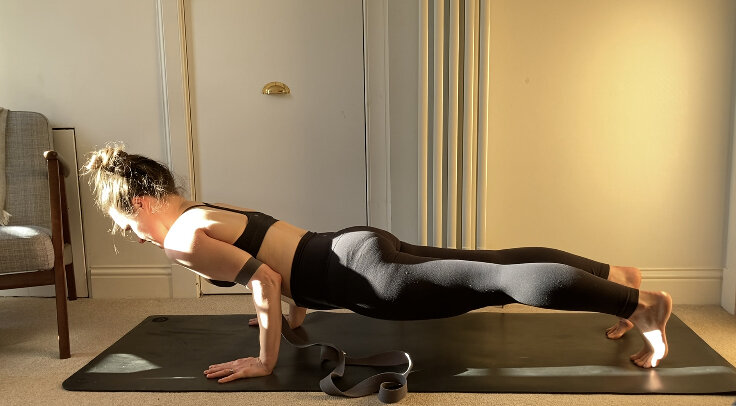3 Ways To Prop Your Chaturanga
I read an interesting article recently, in which the author (Jenni Rawlings, click here to read) calculated that she’d done over 100,000 chaturangas in her yoga lifetime. There are 50 chaturangas in ashtanga yoga, and often 20-30 in your typical vinyasa class.
Chaturanga is a posture that is so key to vinyasa yoga yet one that takes a huge degree of strength, skill and precision to execute well. The shoulder joint, unlike the hip, is largely comprised of muscle and ligaments, therefore learning to load bear as yogis is something we shouldn’t rush into.
In fact, my teacher Jason Crandell recommends practising regularly for one-two years before attempting the full version of the pose, arguing that it is far better and more sustainable for your practice long term to build strength and skill in other variations first.
Personally, I have scaled back the chaturangas in my classes. These days I’m a firm believer that less is more, and that postures such as cobra, locust and forearm plank have just as much to offer (often more) when it comes to creating balanced strength in our bodies, helping counteract the rounded shoulders that often come as a by-product of screen-based modern life.
Still, that doesn’t mean we should avoid chaturanga. Let’s just learn how to execute it well while under less load first, then progress it as we get stronger and more skillfull at it. Here are a few of my favourite ways to use props to do just that.
With all of these variations, focus on keeping the shoulders either at the same height or slightly higher than the elbows (so the shoulders don’t drop into extension), and drawing the shoulder blades down and together (depression and retraction). Both of these actions help keep the shoulders stable and safe during weight bearing.
Chaturanga With A Bolster
I absolutely love this variation and teach it in all my chaturanga workshops. Simply get a bolster, place it under your torso and come into chaturanga. From here you can work on refining (drawing the shoulders down and together, hugging the arms in, lengthening the tailbone and lifting the hip points, engaging the legs and glutes etc) and building muscle memory while being completely supported. It also helps you find that strong line of energy where the shoulders, spine and pelvis are all connected and working together, as opposed to the shoulders dipping below the elbows and the lower back collapsing.
Chaturanga With A Strap
This one is fantastic as your upper body is supported by the strap and it stops you extending the shoulders (when the shoulders dip below the elbows it puts them in a more vulnerable position), yet you can really work on powering up the glutes and legs. Make a shoulder-width loop with your belt: you want it to be wide enough so that the arms can come alongside the body, but tight enough that you can feel the adduction (hugging in) of the arms. Focus on drawing the shoulders together and down, keeping the front of the shoulders elevated. Start with the knees down and work on lifting and reaching back through the legs and feet.
Chaturanga With Blocks
This is one I teach often in my drop-in classes, and is a great way to build strength, as well as understand how to keep the frontal shoulders slightly elevated and prevent them moving into extension. Get two blocks, set them on the tallest height shoulder-width apart. Come onto all fours, place your hands behind the blocks and walk the knees and inch or two behind the hips. Bend the elbows an inch and push back up, gradually increasing how far you lower towards the blocks as your strength builds. Keep lengthening the tailbone, lifting the hip points and maintaining core engagement - no dumping into the lower back please! When you feel strong enough, lift the legs and repeat again, lowering an inch or so and building up. You’ve got this!




